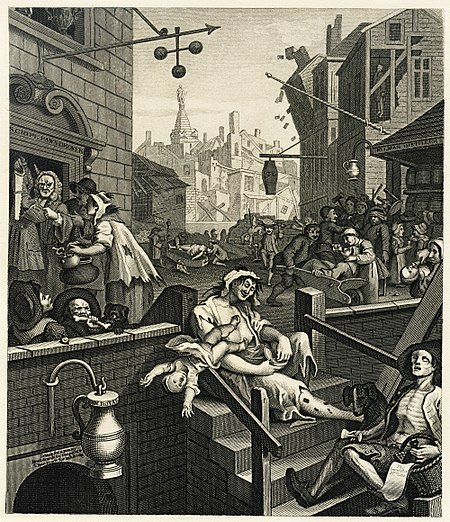Physostigmine
| |||||||||||||||||||||||||||||||||||||||||||||||||||||||||||||||||
Read other articles:

Area of Bradford, West Yorkshire, England This article needs additional citations for verification. Please help improve this article by adding citations to reliable sources. Unsourced material may be challenged and removed.Find sources: Little Germany, Bradford – news · newspapers · books · scholar · JSTOR (August 2011) (Learn how and when to remove this message) Victorian buildings in Little Germany Little Germany is an area of particular historical and …

Міністерство оборони України (Міноборони) Емблема Міністерства оборони та Прапор Міністерства оборони Будівля Міністерства оборони у КиєвіЗагальна інформаціяКраїна УкраїнаДата створення 24 серпня 1991Попередні відомства Міністерство оборони СРСР Народний комісаріа�…

For Tromsø's former airport, see Tromsø Airport, Skattøra. Airport in Tromsøya, TromsøTromsø AirportTromsø lufthavnIATA: TOSICAO: ENTCSummaryAirport typePublicOwner/OperatorAvinorServesTromsø, NorwayLocationLangnes, Tromsøya, TromsøFocus city for Lufttransport Widerøe Elevation AMSL10 m / 32 ftCoordinates69°40′53″N 018°55′04″E / 69.68139°N 18.91778°E / 69.68139; 18.91778Websiteavinor.noMapTOSRunways Direction Length Surface m ft 18/36…

Un tè con MussoliniHester (Maggie Smith) in una scena del filmLingua originaleitaliano, inglese Paese di produzioneItalia, Regno Unito Anno1999 Durata117 min Generestorico, drammatico RegiaFranco Zeffirelli SoggettoFranco Zeffirelli SceneggiaturaFranco Zeffirelli, John Mortimer Casa di produzioneMedusa Film, Cattleya, Cineritmo, General Productions Distribuzione in italianoMedusa Film FotografiaDavid Watkin MontaggioTariq Anwar MusicheStefano Arnaldi Jerome Kern Alessio Vlad CostumiAnna…

Disambiguazione – Se stai cercando il campionato europeo di calcio Europa 2020, vedi Campionato europeo di calcio 2020. Questa voce sull'argomento Unione europea è solo un abbozzo. Contribuisci a migliorarla secondo le convenzioni di Wikipedia. Segui i suggerimenti del progetto di riferimento. Bandiera dell'Unione europea Europa 2020 (Europe 2020) è una strategia decennale proposta dalla Commissione europea il 3 marzo 2010 per promuovere una crescita intelligente, sostenibile e inclusiv…

Северный морской котик Самец Научная классификация Домен:ЭукариотыЦарство:ЖивотныеПодцарство:ЭуметазоиБез ранга:Двусторонне-симметричныеБез ранга:ВторичноротыеТип:ХордовыеПодтип:ПозвоночныеИнфратип:ЧелюстноротыеНадкласс:ЧетвероногиеКлада:АмниотыКлада:Синапсиды…
2020年夏季奥林匹克运动会马来西亚代表團马来西亚国旗IOC編碼MASNOC马来西亚奥林匹克理事会網站olympic.org.my(英文)2020年夏季奥林匹克运动会(東京)2021年7月23日至8月8日(受2019冠状病毒病疫情影响推迟,但仍保留原定名称)運動員30參賽項目10个大项旗手开幕式:李梓嘉和吳柳螢(羽毛球)[1][2]閉幕式:潘德莉拉(跳水)[3]獎牌榜排名第74 金牌 銀牌 銅牌 �…

Questa voce o sezione sull'argomento marina non cita le fonti necessarie o quelle presenti sono insufficienti. Puoi migliorare questa voce aggiungendo citazioni da fonti attendibili secondo le linee guida sull'uso delle fonti. Segui i suggerimenti del progetto di riferimento. Navi cargo alla fonda Sono navi da carico o navi da trasporto o cargo le navi, di qualsiasi forma e dimensione, che trasportano merci tra i diversi porti. Sono migliaia le navi di questo tipo che solcano ogni giorno le…

United States government diplomatic training program Not to be confused with School of Foreign Service.For the Indian equivalent, see Foreign Service Institute of India. Foreign Service InstituteSeal of the U.S. Department of StateAgency overviewFormedMarch 13, 1947; 77 years ago (1947-03-13)HeadquartersNational Foreign Affairs Training Center, Arlington County, Virginia, U.S.38°52′04″N 77°06′08″W / 38.8677°N 77.1023°W / 38.8677; -77.1023Empl…

Kingdom in Central Myanmar (Burma) – 1313 to 1365 Kingdom of Pinyaပင်းယခေတ်1313–1365Pinya Kingdom c. 1350StatusKingdomCapitalPinyaCommon languagesBurmese (official) Mon, ShanReligion Theravada Buddhism, Ari Buddhism, AnimismGovernmentMonarchy• 1313–25 Thihathu• 1325–40 Uzana I• 1344–50 Kyawswa I• 1359–64 Narathu Regent • 1340–44 Sithu LegislatureHluttawHistorical eraWarring states• Myinsaing Regency founded 17 De…

Men's 100 metre individual medley at the 2016 FINA World Swimming Championships (25 m)VenueWFCU CentreDates8 December (heats and semifinals)9 December (final)Competitors84 from 59 nationsWinning time51.84Medalists Michael Andrew United States Daiya Seto Japan Shinri Shioura Japan← 20142018 → 2016 FINA World Swimming ChampionshipsFreestyle50 mmenwomen100 mmenwomen200 mmenwomen400 mmenwomen800 mwomen…

Distilled alcoholic drink flavoured with juniper This article is about the alcoholic beverage. For the card game, see Gin rummy. For other uses, see Gin (disambiguation). GinA selection of bottled gins for sale in Georgia, United States, 2010TypeDistilled alcoholic drinkIntroduced13th centuryAlcohol by volume 35–60%Proof (US)70–140°ColourClearIngredientsBarley or other grain, juniper berriesRelated productsJenever Gin (/dʒɪn/) is a distilled alcoholic drink flavoured with juniper ber…

La neutralità di questa voce o sezione sull'argomento politici è stata messa in dubbio. Motivo: voce pantagruelica con smaccati aggettivi e citazioni apologetiche, si veda anche la talk Per contribuire, correggi i toni enfatici o di parte e partecipa alla discussione. Non rimuovere questo avviso finché la disputa non è risolta. Segui i suggerimenti del progetto di riferimento. Ron Paul Membro della Camera dei Rappresentanti - Texas, distretto n.14Durata mandato3 gennaio 1997 &…

Japanese diesel-electric multiple unit train GV-E400 seriesNiigata-area GV-E400 series on the Uetsu Main Line in July 2022ManufacturerKawasaki Heavy IndustriesBuilt atKobeReplacedKiHa 40Constructed2017–Entered service19 August 2019Number built63 vehiclesNumber in service63 vehicles (as of 15 October 2021 (2021-10-15))Formation1/2 cars per unitOperators JR EastDepotsAkita, NiitsuLines served Uetsu Main Line Shinetsu Main Line Yonesaka Line Banetsu West Line Tsugaru Line Gono Line…

Australian model and actress Megan GaleMegan Gale at the 2015 Cannes Film FestivalBornMegan Kate Gale (1975-08-07) 7 August 1975 (age 48)Parmelia, Western Australia, AustraliaOccupation(s)Model, actressYears active1993−presentPartner(s)Shaun Hampson(2011–present)Children2Modeling informationHeight182 cm (5 ft 11 3/4 in)Hair colorBrownEye colorGreenAgencyChic Celebrity Management, Atelier Management Megan Kate Gale (born 7 August 1975) is an Australian model and actre…

العلاقات المجرية البالاوية المجر بالاو المجر بالاو تعديل مصدري - تعديل العلاقات المجرية البالاوية هي العلاقات الثنائية التي تجمع بين المجر وبالاو.[1][2][3][4][5] مقارنة بين البلدين هذه مقارنة عامة ومرجعية للدولتين: وجه المقارنة المجر بالاو �…

Matheus PereiraNazionalità Brasile Altezza181 cm Peso69 kg Calcio RuoloCentrocampista Squadra Eibar CarrieraGiovanili 2009-2015 Corinthians Squadre di club1 2015-2016 Corinthians1 (0)2016-2017 Empoli1 (0)2017 Juventus0 (0)2017-2018→ Bordeaux 22 (0)2018→ Paraná2 (0)[1]2018-2019 Juventus U2322 (5)2018-2019 Juventus3 (0)2019-2020→ Digione10 (0)2020-2022 Barcellona B60 (5)[2]2022- Eibar73 (3)[3] Nazio…

Pour les articles homonymes, voir Behr. Karl Howell Behr Karl Behr en 1914. Nationalité États-Unis Naissance 30 mai 1885New York Décès 15 octobre 1949 (à 64 ans)New York Hall of Fame Membre depuis 1969 Palmarès Meilleurs résultats en Grand Chelem Aust. R-G. Wim. US. Simple 1/8 Double F modifier Karl Howell Behr, né le 30 mai 1885 à New York et mort le 15 octobre 1949 dans la même ville, est un avocat et un joueur de tennis membre de l'équipe américaine de Coupe Davis en 1907. Il…

Long Island Rail Road station in Suffolk County, New York Not to be confused with Islip station on the Montauk Branch. Central IslipThe station house at the Central Islip station, as seen on May 22, 2008.General informationLocationSuffolk Avenue & Lowell AvenueCentral Islip, New YorkCoordinates40°47′31″N 73°11′41″W / 40.79188°N 73.19467°W / 40.79188; -73.19467Owned byLong Island Rail RoadLine(s)Main LineDistance43.6 mi (70.2 km) from Long Island …

River in New York, United States Hutchinson RiverEast Chester Creek, Eastchester Creek, Eastchester River, Hutchins Creek, Hutchinson Creek, Hutchinson's Brook, Hutchinson's River, Hutchinsons River[1]River in Twin Lakes County Park between Lake Innisfree and Reservoir 3Native nameAquacanounck, Aqueanounck, Aqueanouncke (Munsee)[1]LocationCountryUnited StatesStateNew YorkRegionGreater New York CityCountiesWestchester, BronxCities, towns and villagesScarsdale, New Rochelle, E…



